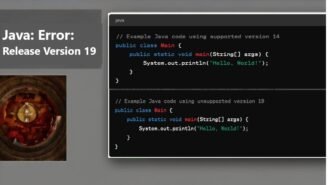WordPress is one of the most popular content management systems (CMS) globally, known for its flexibility and extensive range of themes and plugins. These themes are primarily written in PHP, HTML, CSS, and JavaScript. However, if you are a Python developer, you may wonder if it’s possible to create a WordPress theme using Python. Let’s explore this question in depth.
Understanding the WordPress Ecosystem
WordPress is built on PHP, which is a server-side scripting language, and uses MySQL or MariaDB for its database. The theme development process revolves around PHP templates and styling with HTML, CSS, and JavaScript. Given this core architecture, WordPress does not natively support Python for developing themes or plugins.
Can You Use Python to Create a WordPress Theme?
Technically, no, you cannot directly create a WordPress theme using Python. WordPress does not have support for Python as its backend language. The themes require PHP for dynamic rendering, which means if you want to create a WordPress theme, you would need to use PHP along with other web technologies like HTML and CSS.
However, if you are more comfortable with Python and still want to integrate it into your WordPress development workflow, there are a few workarounds:
Workarounds for Using Python in WordPress
External API Integration: You can create an external service or API in Python, which handles specific functionality or logic, and then connect this API to your WordPress site. For example, if you are building a data-heavy application, Python could handle data processing, and the results could be fetched in WordPress through REST API calls from the PHP side.
Use Python for Data Manipulation: If your WordPress site requires complex data manipulation, such as machine learning or data processing tasks, you can use Python to handle these tasks separately. After processing the data in Python, the results can be sent to WordPress via an API or through database integration.
Flask/Django + WordPress Headless Mode: If you’re familiar with Python web frameworks like Flask or Django, you can create a headless WordPress setup. In this approach, WordPress only acts as a content management backend, and your frontend is built using Python. You can fetch content via the WordPress REST API and display it on your Flask/Django application, allowing you to leverage Python for the frontend logic while still using WordPress as your CMS.
Alternatives to Using Python for WordPress Themes
If you want to use Python for building websites, but are limited by WordPress’ PHP foundation, you may want to consider other CMS options that are more Python-friendly, such as:
- Django CMS: A content management system built on top of the Django framework, which is natively in Python.
- Wagtail: Another Python-based CMS, offering flexibility and a modern approach to content management.
- Flask Static Sites: While not a CMS, Flask, combined with a static site generator like Jinja2, can be used to build custom, lightweight websites using Python.
Conclusion
While you cannot directly create a WordPress theme in Python, there are creative ways to incorporate Python into your workflow, particularly for data processing or through external API integration. If you are committed to working with Python, you might also consider using a Python-based CMS instead of WordPress. However, to fully create themes for WordPress, PHP remains a requirement.
In the end, choosing the right tool depends on your project’s specific needs and your comfort level with different programming languages.





